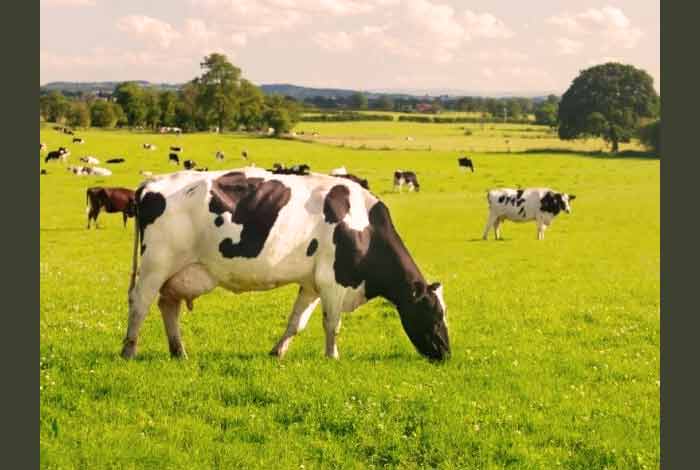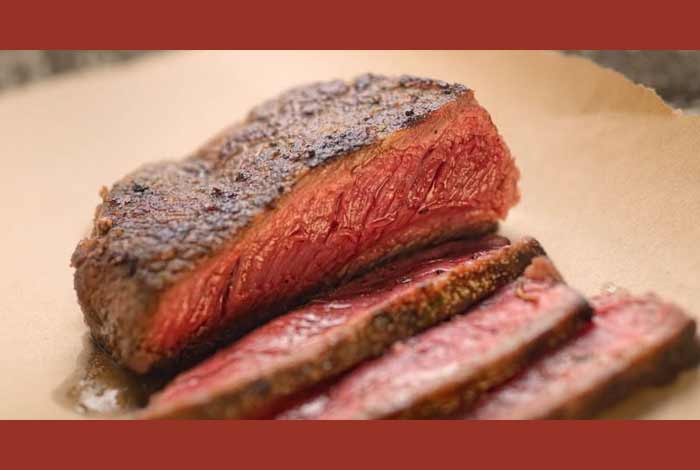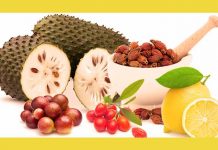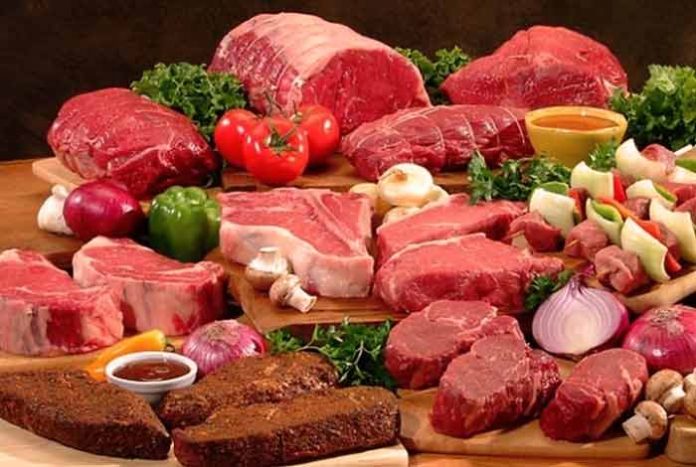
Red meat is a great source of protein and has all the essential nutrients like iron, vitamin B12, omega-3 fatty acids and zinc, all associated with the brain and heart health.
Although moderate quantities of the lean meat might be great, excess of processed red meat may lead to the development of certain cancers.[1]
Dietary guidelines of Australia recommends limiting the lean meat consumption to only 455 gm every week, which is around 3-4 small-sized pieces of cooked red meat – almost the size of your palm.
Grass feeding and organic farming have some purported environmental and social benefits when compared with the traditionally produced meat. So, are they any healthier? Read on to know the truth.
Organic Red Meat vs Non-organic Red Meat
Organic red meat is usually grown without the use of artificial herbicides, pesticides, growth hormones or antibiotics. Certified foods have already met the Australian standards for the organic produce; although it is important to note that there is no legal description of “organic.”
Organic farming may still utilize some naturally occurring pesticides or biopesticides like sulfur, copper, and also pyrethrins (bacteria-produced pesticide). Biopesticides can also be equally harmful in larger doses. However, both synthetic and natural pesticides levels are much low and actually below the recommended levels.
Organic agriculture does not use antibiotics to promote the livestock growth. This is a great step towards preventing transmission of the antibiotic-resistant bacteria to the food supply chain and environment.
Studies that have analyzed the bacterial contamination of organic red meat versus conventional meat suggest that organic meat is slightly more contaminated than the conventional one.[2]However, conventional meat may become increasingly contaminated due to antibiotic-resistant bacteria; though the available evidence is still inconclusive.
From the nutritional outlook, organic red meat might potentially contain more omega-3 fatty acids. This is due to the fact that the organic livestock is usually fed a forage-based diet, including grass, which slightly helps increase the omega-3 levels. However, there is just little significant evidence to highlight the difference.
It is also unclear whether these changes would have any health benefit or implication in future.
A potential downside of organic red meat consumption is its higher cost. Its price may vary from around 1.5 to 2 times the cost of conventional red meat. Eventually, the increasing growth in the organic agriculture may result in price fall. But, some consumers still opt for organic meat for social and environmental reasons.
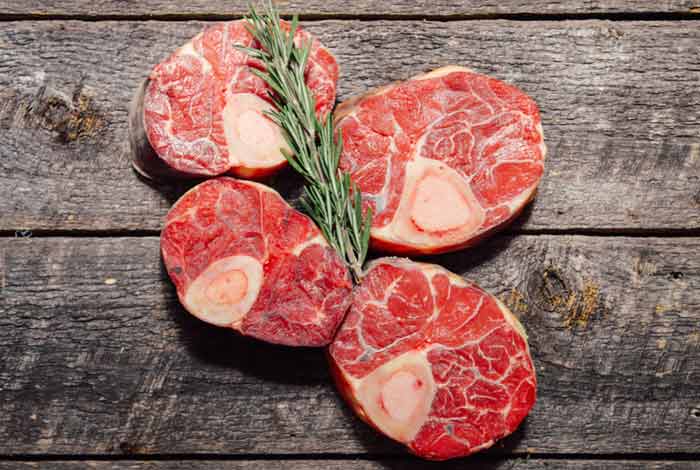
Hormone-Free Meats
Australian food guidelines allow using certain growth hormones for increasing the weight of the cattle. These hormones are most commonly used as growth promoters – progesterone, estrogen and testosterone – that also occur naturally in various foods.
However, the difference in the hormone levels between hormone-free and hormone-fed beef is significantly small. An individual would have to consume more than 77 kg of beef sourced from a hormone-treated animal in a single sitting for getting the same level of estrogen hormone, which is present in one egg.
However, hormone levels are strictly regulated to make sure that the meat is safe for human consumption and not harmful for animals.
Grain-Fed Meat or Grass-Fed Meat
Grass-fed red meat is sourced from animals that have grazed only on grass. Accordingly, the grass varies majorly on the climate and region.Grain-fed red meat is sourced from animals that are grass fed for a limited part of their life and then, fed on a grain-based diet for the rest of their life, which relies on the seasonal condition and market requirements. This is also known as “grain finishing.”
Livestock are being grain-fed for various reasons, such as maintaining a continuous supply of meat, keeping up with the market demand of meat, increasing the animal weight and also providing sufficient produce in conditions like drought.
The main difference between these two meats is that the grass-fed meat has a higher amounts of essential omega-3 fatty acids and also has adequate amounts of vitamin A and vitamin E.[3]
However, the omega-3 fatty acid content even in grass-fed meat is smaller when compared with omega-3-rich foods like salmon. The grass-fed beef has around 90 milligrams every 100 grams, whereas salmon has almost 1.6-2.7 gm every 100 gm.
The omega-3 fatty acids content of the red meat majorly depends on the type of grass on which the animal has been fed.
For being able to get the “certified pasture fed” label in Australia, the cattle must be entirely fed on the pasture for their whole life and should not be confined to feedlots for intensive feeding.
Certified pasture-fed meat producers might also be certified as being free of antibiotics and growth hormones.
As a downside, you might need to pay more for this particular red meat as raising cattle grass is both expensive and more time-consuming.
Wagyu Red Meat
Wagyu is a breed of cattle, which is popularly known for the highly marbled red meat with fat accumulation inside the muscles. As type of feed and the duration determine the overall fat content of the red meat. Wagyu red meat is highly marbled and relatively high in fat content. The cattle is fed on a grain-based diet for almost 300 days.
A higher fat content in red meat indicates more kilojoules, but wagyu red meat has a better ratio of unsaturated to saturated fats when compared to the regular red meat. A diet with less amount of saturated fats is much better for your heart health, provided you eat in moderation. Again, another concern is the wagyu beef’s cost!
Lean Meat or Low-fat Meat
Red meat with more interesting labels like “lean” usually contains not more than 10 gm fat every 100 gm. “Low-fat” red meat should contain less than 3 gm fat every 100 gm.
Choosing lean red meat would reduce your total intake of saturated and total fats, that may promote your cardiovascular health.
It is important to note that the meat labeled “premium” is not generally a regulated term under the pre-set food standards and may be used by the food suppliers to describe their red meat according to their ‘self-defined’ quality.
Bottomline
There might be slight nutritional differences between the organic and grass-fed red meat when compared with the non-organic and the grain-fed meat varieties. But, according to the current available evidences, it might not be able to make substantial impact on our health. Now, it is up to you if you want to shell out for red meat, which goes well with your concept of environmental and social values.

